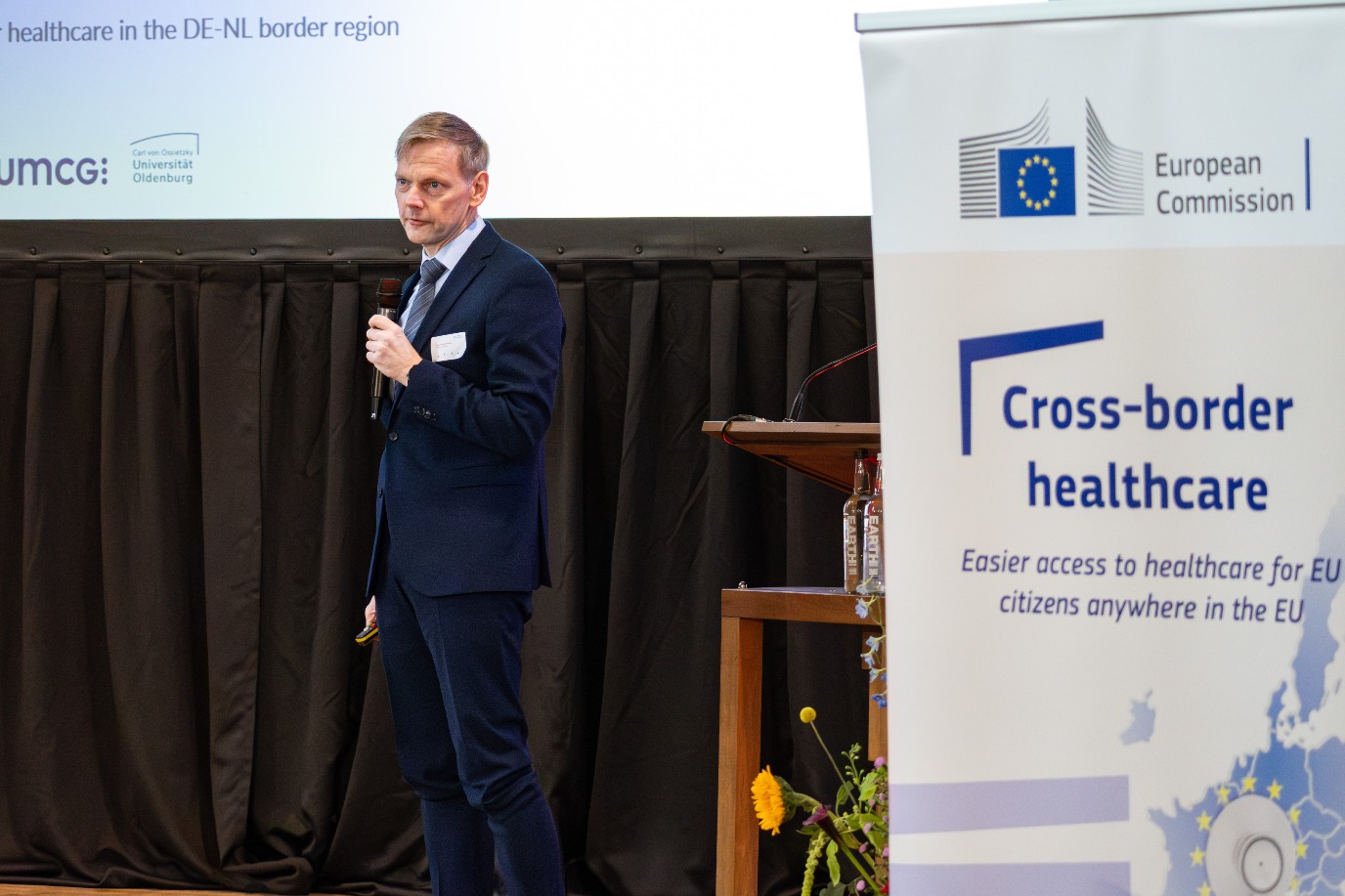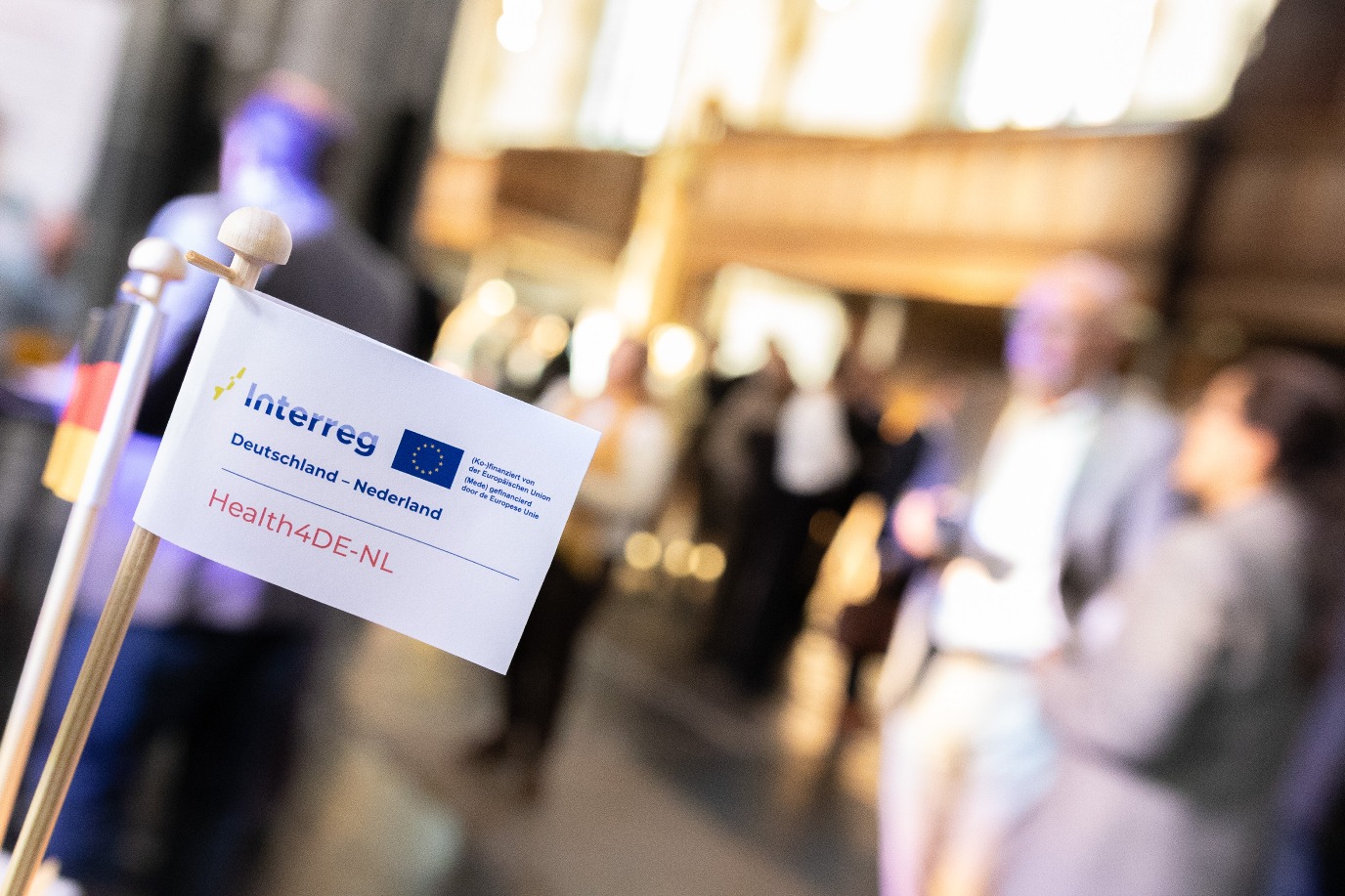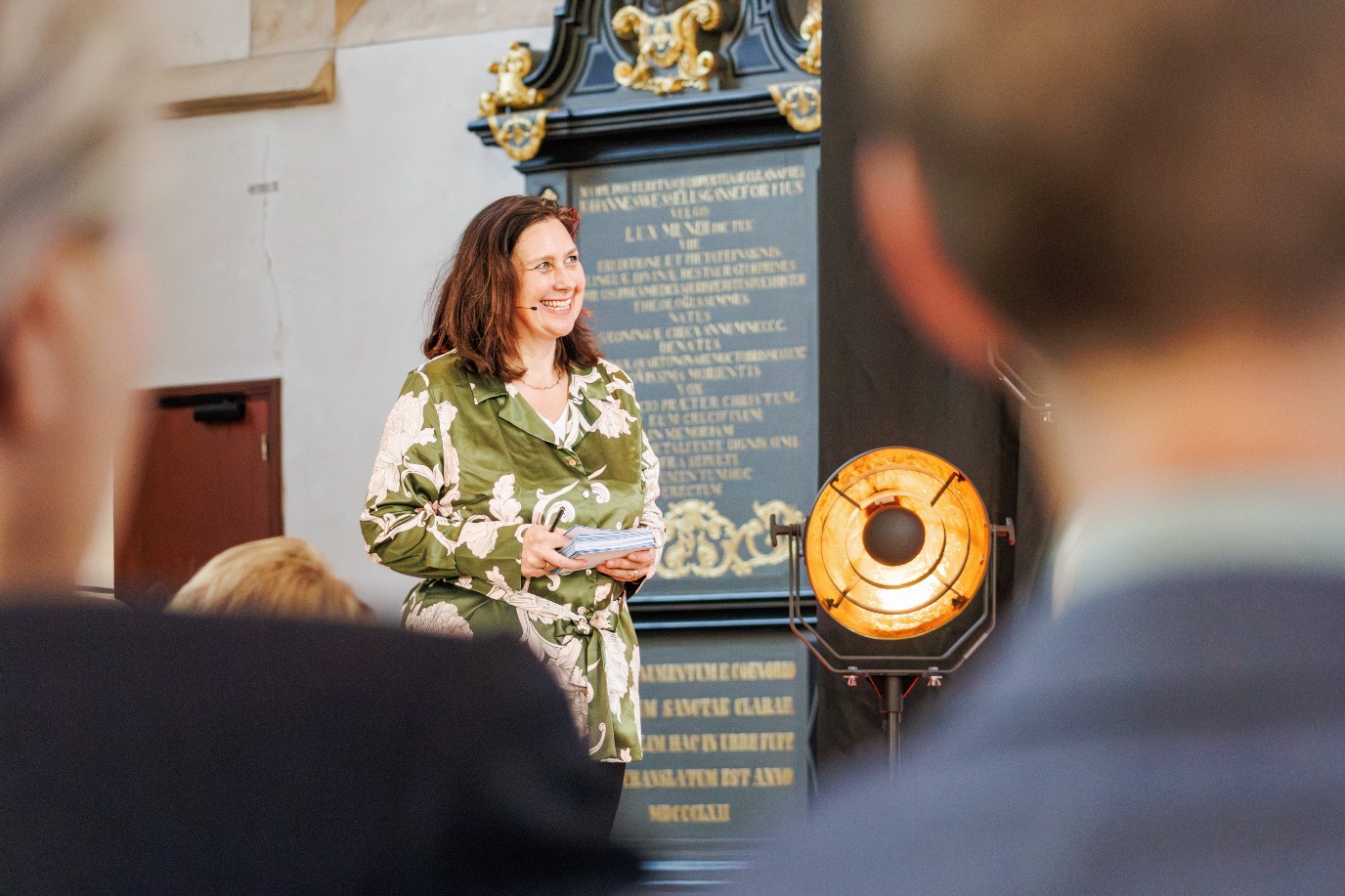‘Collaboration is complex, but well worth the effort’
Two border barriers that opened in the Martinikerk marked the launch of Health4DE-NL on Thursday, a project aimed at strengthening cross-border healthcare collaboration in the Dutch-German border region. The launch coincided with the Symposium on Cross-border Healthcare in the DE-NL Border Region, which focused on European cross-border patients’ rights and European Reference Networks (ERNs). A report from Martinikerk.
Text: Jelle Posthuma

Jan Anthonie Bruijn, demissionary Minister of Health, Welfare and Sport (VWS) in the Netherlands, opened the meeting in the Martinikerk with a brief video message. He began with the Dutch saying: ‘Een goede buur is beter dan een verre vriend’, loosely translated as ‘a good neighbour is worth more than a distant friend’. With this, he emphasized the importance of a strong relationship between the neighbouring countries of the Netherlands and Germany.
Potential
The King's Commissioner for Groningen, René Paas, agreed with this in his opening speech in the Martinikerk. With a touch of humour, he quoted a Dutch writer who described the Dutch-German border as ‘one of the most erotic in Europe’, as nowhere else residents so often cross the border to form relationships, live together and marry. However, Paas knew that collaboration in healthcare poses serious challenges. That said, he concluded that today is all about finding solutions to those challenges.
Nikolaus Jansen, Landesbeauftragter für Regionale Landesentwicklung, who greeted the audience with a Northeastern Dutch and Northern German “Moi(n)", also emphasised the potential of the collaboration. According to him, it will lead to better accessibility of healthcare, more efficient use of resources, more exchange of knowledge, and greater resilience during crises, as was evident during the COVID pandemic.
Still limited
This was followed by a welcome message by Sandra Gallina and a presentation by Natalia Zampieri, both from the European Union's Directorate-General for Health. Zampieri discussed the two legal frameworks for cross-border healthcare. Matthias Wismar from the European Observatory on Health Systems and Policies referred to cooperation between European border regions as a ‘no-brainer’. At the same time, he pointed out that the scale of cross-border healthcare is still limited.
Wismar presented remarkable figures: across Europe, only about two million patients receive unplanned care abroad each year – accounting for just 0.4% of the total healthcare budget of EU member states. The number of patients seeking planned care abroad is even smaller. Poor information provision remains a major bottleneck, Wismar noted.
Differences and similarities
Jochen Mierau, Professor of Health Economics, also stressed the importance of collaboration between border regions. It is in these regions, not in the distant European capitals, that the most intensive cooperation takes place, he stated. Mierau explained that both the Dutch and German healthcare systems are based on the so-called Bismarck model, which centres on regulated competition and insurance-based reimbursement. However, this competition is in fact limited, as the demand for care far exceeds supply.
At the same time, Mierau noted, important national differences exist between the two systems, making cooperation more difficult. His advice for better alignment: start with small steps. Creating an entirely new system for cross-border collaboration is unrealistic, but gradual improvements can go a long way. Mierau emphasized that both existing systems have also evolved over the decades through small, incremental changes.
Solidarity
Lars Schwettmann from the Cross-border Institute of Healthcare Systems and Prevention (University of Oldenburg) agreed. He presented a long list of reforms to the German healthcare system. The term ‘Gesundheitsreform’ has a remarkable history in Germany: in 1988 it was named ‘word of the year,’ and in 1996 even ‘worst word of the year.’
In the field of data sharing, Schwettmann noted, major steps have been taken in recent years, offering new opportunities for cross-border healthcare. Despite the many reforms, five core elements of the German healthcare system have remained constant: mandatory participation, contribution-based financing, benefits in kind, solidarity, and self-governance. Of these, solidarity is especially valued in Germany.






Information needed
The sessions in the Martinikerk concluded with a short panel discussion. Panelist Wismar emphasized the willingness to cooperate, arguing that collaboration between border regions is almost a ‘natural thing’. Evert Jan van Lente (International Consultant Health Financing) also pointed to the opportunities: cross-border healthcare can even serve as a catalyst for other forms of European cooperation.
‘If there are so many opportunities, where are the obstacles?’ asked moderator Anne Peetoom. The panel pointed to systemic differences, such as the role of the general practitioner in the Netherlands as a ‘gatekeeper,’ whereas in Germany patients can go directly to a specialist. A lack of information was also mentioned: patients will be reluctant to seek care abroad if they are unsure whether it will be reimbursed.
The European Reference Networks (ERNs) were also discussed in several talks. Stefano Vettorazzi (DG SANTE), Emily White (Amsterdam University Medical Center), Greta Ginski (University Hospital Schleswig-Holstein) and Van Lente described how these networks enable healthcare professionals to share knowledge and expertise on rare and complex diseases. Finally, representatives from DG REGIO discussed the Interreg program as a key instrument for cross-border cooperation. ‘You can’t accuse us of giving you too little information today,’ moderator Peetoom joked.
Not reinventing the wheel
After the speeches, the official launch of the Health4DE-NL Interreg project took place, symbolized by the opening of two border barriers. Melanie Walter, Minister for Europe and Regional Development in Lower Saxony, and Cora-Yfke Sikkema, Mayor of Oldambt, operated the barriers on either side of the border. Adriana Pérez Fortis, coordinator of the Cross-border Institute of Healthcare Systems and Prevention (CBI), spoke about Health4DE-NL – the new project addressing cross-border healthcare challenges and strengthening cooperation between northern border regions.
‘We are not reinventing the wheel,’ Fortis said. ‘As a strategic project, we focus on simple but essential things: laying the foundation for structured, organized, and sustainable cross-border cooperation in healthcare.’
Capturing the spirit
In the second half of the afternoon, participants split into various breakout sessions. ‘What are the key takeaways?’ moderator Peetoom asked afterwards. ‘Cross-border collaboration is incredibly complex, but well worth the effort,’ replied one session chair. His closing remark captured the spirit of the day perfectly: border regions are often at the periphery, and it is precisely for the people living there that access to good healthcare is most essential.
This symposium was organised by the European Commission, in cooperation with the Dutch Ministry of Health, Welfare and Sport (VWS), the German Federal Ministry of Health (BMG), the Cross-border Institute of Healthcare Systems and Prevention (CBI), and with the support of the National Contact Point EU-Patienten.de of the DVKA.
The Health4DE-NL project is funded by the Interreg IV Germany–Netherlands programme, the European Union, the Niedersächsisches Ministerium für Bundes- und Europaangelegenheiten, and the provinces of Groningen and Fryslân, has a total budget of €3.2 million.
More news
-
15 September 2025
Successful visit to the UG by Rector of Institut Teknologi Bandung
